About 10 months ago, just after last year’s SCAA show, I was having a beverage with Kyle Anderson, co-owner and head engineer of Baratza. We were talking, as usual, about grinders, the state of grinders, and what the specialty coffee world wanted from a grinder. I rattled off my usual list of peeves regarding current market grinders, and during the convo, Anderson had a gleam in his eye. At one point he cut the conversation off, saying “I want to show you something.” That something was a CAD drawing of a new grinder design, one that seemingly answered most, if not all the gripes I was pointing out about coffee grinders in general. I was looking at a CAD drawing of a potential game changing product. It was pretty exciting, and one of the reasons I cryptically started calling 2016 “The Year of the Grinder” in social media.
Fast forward to this year, and on the unlikely day of April 1, Anderson’s company (which is based out of Bellevue, Washington) went public with the new project. It was everything I saw in that CAD drawing a year before, and then some. It was grinder that addressed so many issues baristas around the world, both in the home and the cafe, had with grinders: having to deal with up to 10 grams of ground coffee left inside the grinder between uses; speeds slower than 2g a second for espresso, clumps and other impediments to an even, uniform particle size grind; and the kinda holy grail of espresso grinding at least — direct “by weight” grinding, right into a portafilter, accurate to .1g.
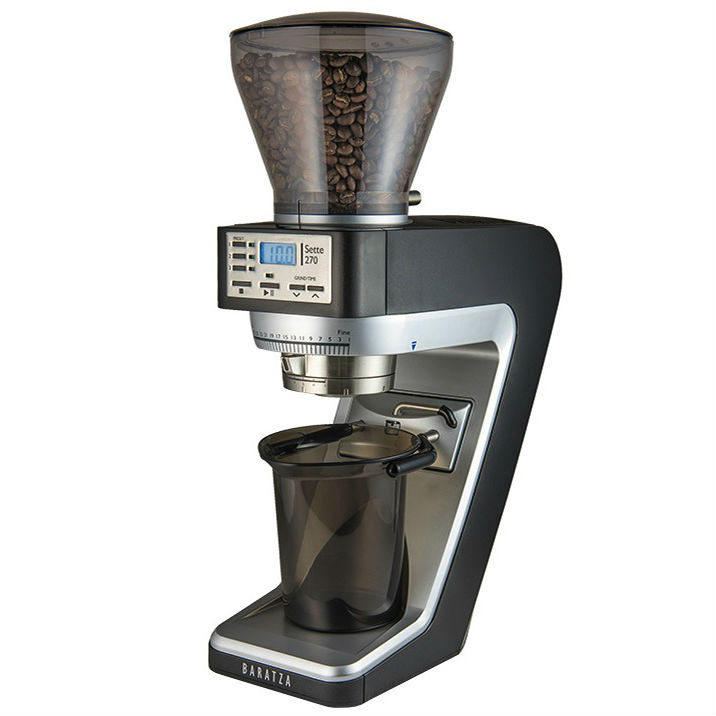
That grinder is the new Baratza Sette 270 Series grinders, announced on April 1, 2016. So how can a grinder be a legit game changer, and not just marketing fluff? Let’s take a bit of a historical stroll down grinder alley to explain that.
Consumer Espresso Grinders since 1990

Prior to the early 1990s, if consumers wanted a professional calibre espresso grinder for the home, they had to pretty much buy a commercial grinder. Otherwise your home grinding choices for coffee were extremely slim; Braun, after decades of making whirlybird style blade grinders, introduced their KM lineup of burr grinders with mechanical timers in 1975, and by the late 1980s, had the KM 30 model. While at the time it was seen as the pinnacle of home grinding solutions, in reality, it was slow, noisy, and its pressed (not cut or milled) flat burrs provided an uneven, overly hot grind.
In the early 1990s, we started to see the rise of a new grinder category for the home: the “prosumer” category. Grinders that were designed for home use but “borrowed” from commercial grinders. Sometimes they borrowed legitimate parts from commercial machines, sometimes they were just designed in aesthetics to look like a pro grinder. One notable prosumer grinder was the Rocky, first introduced in 1992 by Rancilio. This was a full doser espresso grinder that borrowed parts and elements from Rancilio’s commercial grinders, but was meant for home use. At the time of it’s introduction, the Rocky grinder became the standard bearer of what an espresso grinder could be for the home: a full doser mechanism, a beefed up motor, large milled flat burrs, 40 selections on the grinder fineness selection wheel (though only about 5 were usable for espresso!). It looked like a scaled down commercial espresso grinder, because… well that’s what it was.
A few more espresso grinders hit the scenes in the 1990s. Macap, Nuova Simonelli, La Pavoni and even Krups made “home intended” espresso grinders with full doser assemblies. There were also a few Italian manufacturers who made basic, generic home espresso grinders with dosers and let espresso machine companies rebrand them as their own.
But for consumers who didn’t want to spend more than $200 on a grinder, or consumers who wanted to grind for drip, siphon, or press pot coffee, there were no real quality options in the 1990s or even the early 2000s. Braun continued making their KM lineup, Bodum introduced their Antigua burr grinder, and La Pavoni, Krups and other manufacturers made other cheap pressed-burr grinders that were noisy, underpowered, static filled, and without any kind of after sales customer service once the typical 1 year warranty (or in some cases, 90 day warranty) was up.
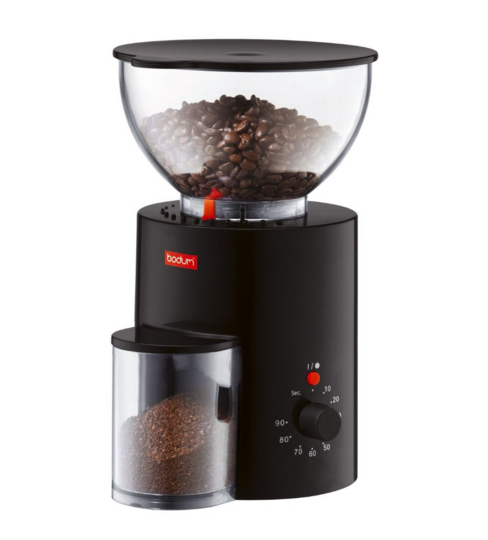
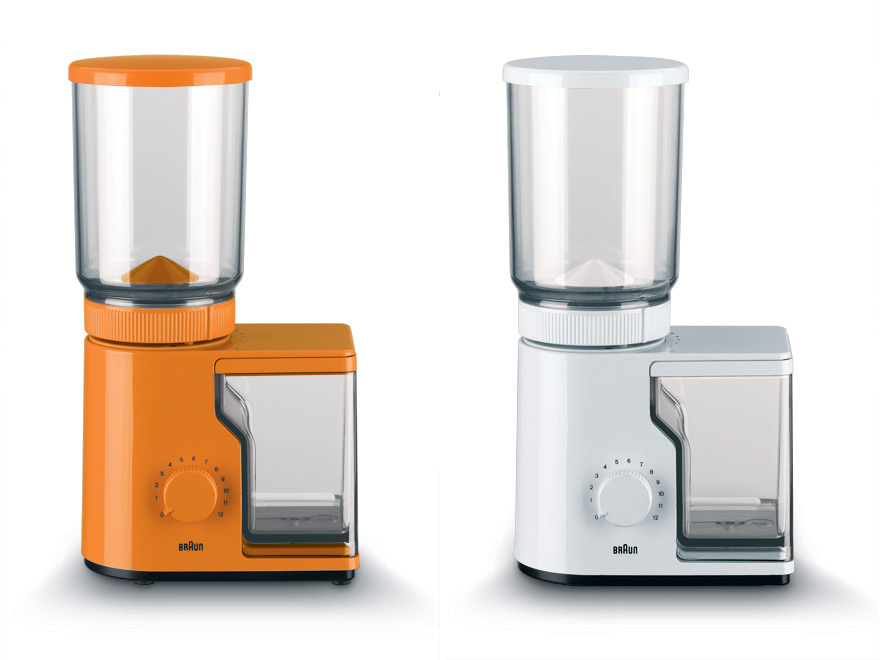
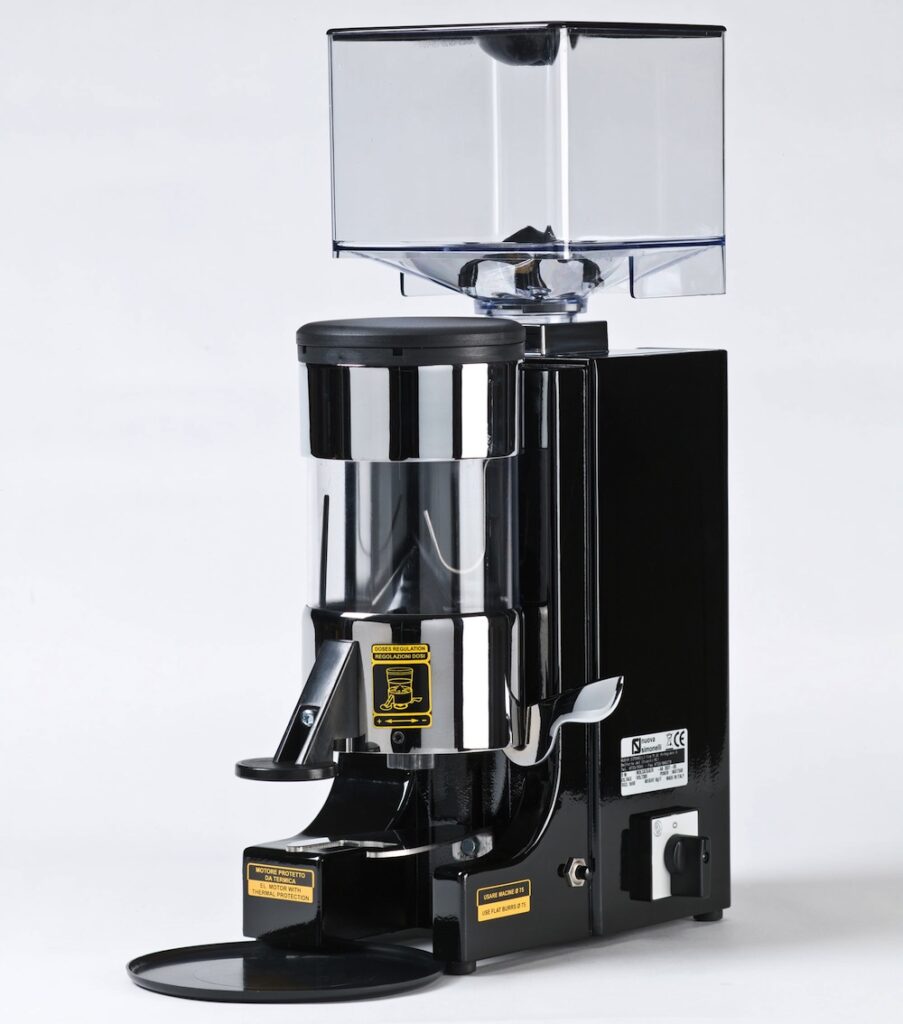
A few of the professional espresso grinder companies also starting making smaller, less expensive commercial models around this time; grinders still designed for light commercial use, but grinders that home baristas started flocking to for a major uptick in grind quality in the home. These companies included Macap who came out with an entire range of grinders under $750, and Mazzer, who introduced the Mazzer Mini espresso grinder, which initially sold for as little as $425, in 1998.
Still, the options for the serious home barista were very limited by 2000: on the espresso side there were a few options under $500, but nothing like we have today; on the non-espresso side, to be brutally frank, the market was still a serious joke if you wanted to buy a quality grinder at the home for your siphon brew or pourover coffee.
Enter Baratza
Baratza started up as a company in 1999, and began life as a consumer espresso machine importer, importing the Solis line of espresso machines into the US and Canada (sigh, Solis had so much promise, that in itself is a sad story). Solis had developed a new grinder as well, the Solis 166 grinder, which the folks from Baratza began selling in 2000. This was, arguably, the best grinder a consumer could buy under $250 for the home, at that time. It was so good that Starbucks actually acquired the exclusive rights to sell and market the grinder, rebranding it as a Starbucks “Barista” grinder, leaving the Baratza folks high and dry.
Solis then offered Baratza an existing alternate grinder to replace the Solis 166, the Solis Mulino, but was kind of a disaster and an episode the Baratza folks would rather forget about. I only mention it because Anderson, chief engineer for Baratza and co-owner, learned a lot about what a good consumer grinder should be from both the 166 and the Mulino. So much so that he decided to go all in and design a new consumer grinder. And he did.
In 2002, the Solis Maestro grinder was introduced. This is what I consider the first true game changer from Baratza.

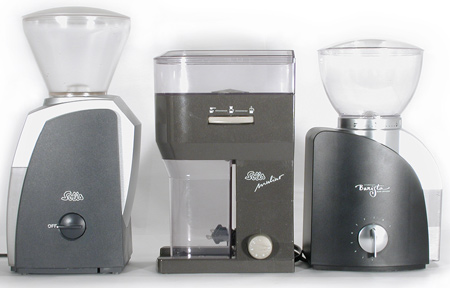
The Maestro was so far ahead of any other consumer grinder under $250 (it was $130 at launch time) that the game was already over for all the other consumer grinder makers.
What made the Maestro so special? It had really good quality machine-milled conical burrs. It had a relatively quiet motor (I cannot stress enough how loud and noisy home grinders were prior to 2002; so noisy their motor noise would drown out any actual bean grinding noise). The Maestro had a mechanical dial timer and unique instant on button. It came with a grounds bin, but could grind into a portafilter directly. And possibly the most important: it was made by a company that rewrote the customer service bible in the coffee and espresso industry, going above and beyond the typical 1yr warranty. So much so that Baratza continued to support the Maestro well beyond 10 years after its introduction and sale.
The Maestro was designed and assembled by Baratza, but still branded for “Solis”. The next major step for Baratza was the development of their own branded grinder, and in 2005, the Baratza Virtuoso was born. It was a refinement on the Maestro grinder, built stronger, a better tuned burr set and other improvements here and there. Because Baratza’s contract and importing Solis products ended around this time, they did slight refinements to the Maestro grinder, and reintroduced it as the Baratza Maestro, and a slightly upgraded model, called the Maestro plus.
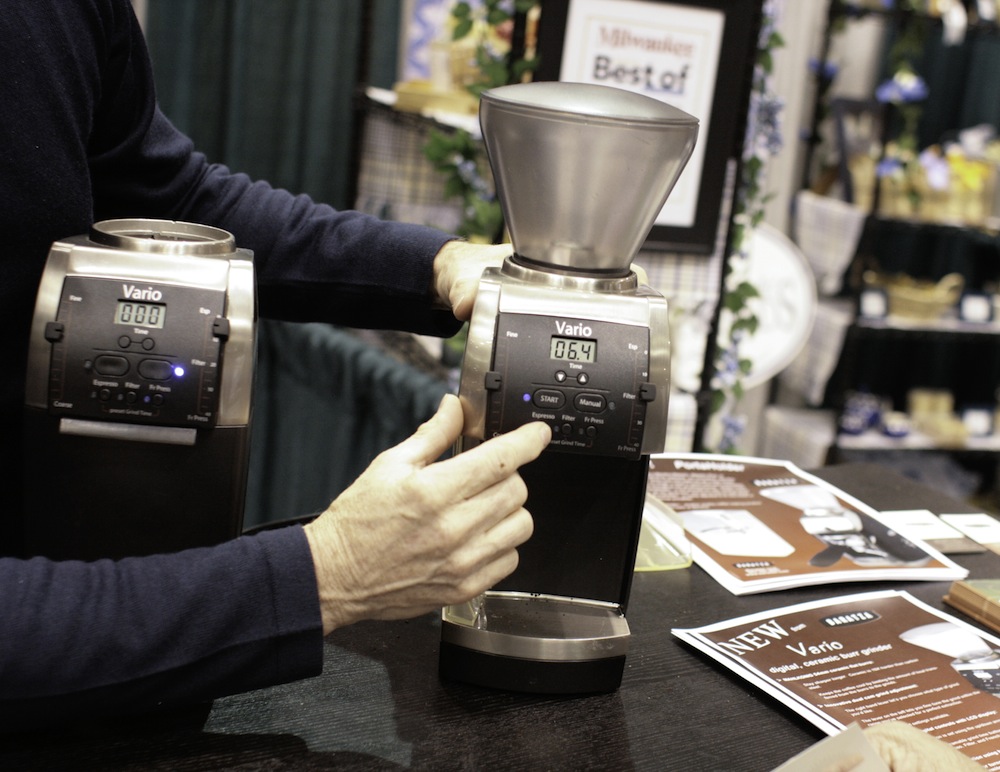
Baratza wasn’t done. They had some ideas on how to do grind fineness selection on a grinder, and rolled out those designs, along with a digital timer in the Vario grinder; a grinder with three grind presets you could change, digital timer control to .1 seconds, and the macro and micro adjustment levers for grind fineness levels. They also did an update to the Virtuoso grinder, introducing the Preciso Grinder, which also had a macro and micro grind adjustment.
All of these grinders — the Maestro, Maestro Plus, Virtuoso, Preciso, and Vario grinders — represented evolutionary steps for Baratza, and gave consumers an unprecedented quality in home grinders that didn’t exist before the company began manufacturing. In 2000, the home consumer wanting a good siphon coffee grinder had to settle for a 100+ decibel, teeth shaking grinder motor producing uneven, grind dust-filled grinds at speeds below 1 gram a second. By 2010, consumers could get a quiet motor grinder, with an exceptionally even grind, producing coffee at up to 1.5g a second for drip style grinds. And on top of that, they had a company that was willing to go way above and beyond the typical 1 year product warranty.
Second Baratza Game Changer
In 2011, Baratza changed the game again. This time rolling out their Vario-W model. The W? It was the first successful consumer grinder that you could use to grind by weight. What is grind by weight? Simply put, it’s a grinder that, if you program it to grind 22.5g of coffee, with one press of the button, you get 22.5g (+/- .2g) in the grind bin once it shuts off automatically.
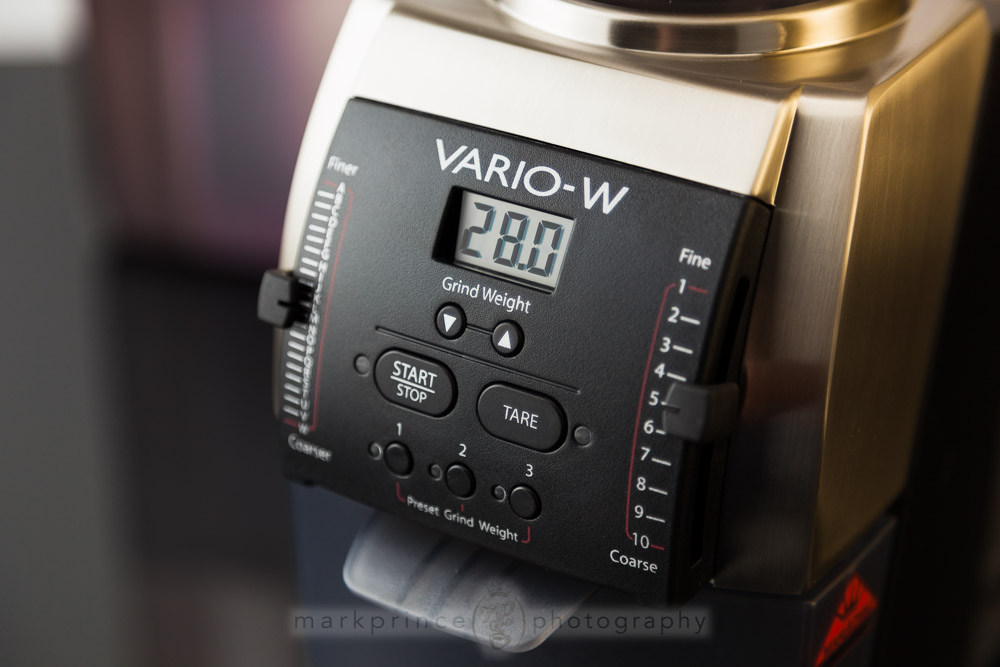
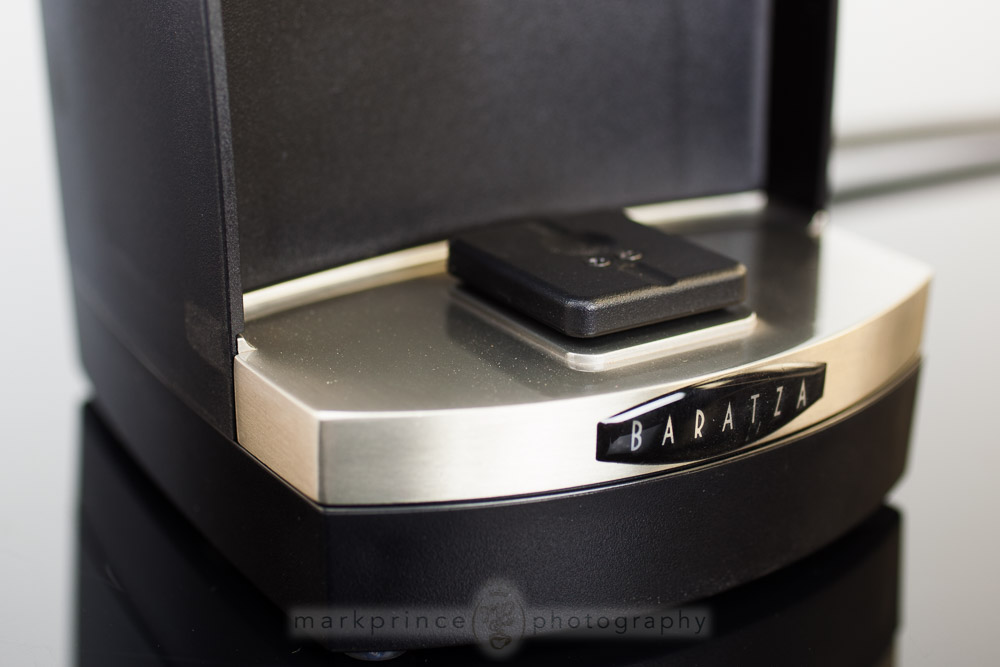
Throughout the ‘aughts, consumers and professionals alike were begging the grinder manufacturing industry to provide a grind by weight grinder. I remember vividly being at SCAA shows in the mid 2000s, seeing it as a number one demand presented to manufacturers like Mazzer, Mahlkonig, Anfim, Ditting, Nuova Simonelli, and others. These grinder manufacturers’ response? We’ve given you digital timers, be happy with that. They’re close enough. (Some grinder manufacturers started introducing digital start/stop timers to some grinders by 2005). So as usual, the userbase for grinders demanded something, and the companies weren’t listening… well, all except one: Baratza was the first company to deliver grind by weight in a grinder, in 2011. For the first time, if you wanted 32.5 grams of coffee each and every time you press the grind button, Baratza provided a grinder that would do that.
All of a sudden, cafes were buying up 2, 3, 4 or more Vario-Ws to use in their pour over programs. The Vario-W had about a 2-2.5g/second grind speed for drip coffee, and to be able to dial in a weight, press a button, go do something else, come back and see that nearly exact weight in the hopper, all ground up, was a godsend. But here too was a problem: the Vario-W, while being a robust and well built grinder that could see a decade or two of use in the home, wasn’t designed or engineered for high volume commercial use. This is where the company’s next grinder stepped up – the Forte grinder, designed in 2013, and introduced in 2014.
There was a problem with the Vario (and Forte) grinders however; they weren’t ideally suited for espresso grinding. Let me step back: they were more than capable of producing a top quality grind for espresso use: the burr set and delivery system meant not a lot of coffee stayed behind inside the grinder (a good thing – lack of grind retention). But both grinders had problems doing full on adjustments for fine tuning your espresso grind. Moving the grind adjustment levers at that level of fineness sometimes did no changes until you clicked 3 or 4 spaces, and then all of a sudden, the grind fineness dial would go those 4 steps finer, and possibly a few more. Long story short, sometimes, you could go through a half pound of coffee or more just trying to dial in an especially tricky grind.
During this time, other grinder companies started slowly waking up; seeing Baratza’s success and dominance of their market has a way of doing that. Commercial espresso grinder manufacturers were introducing more “mini” type commercial grinders for home espresso use, at a wide range of pricing, from $450 to $1,000 and more. Consumer grinder manufacturers were constantly playing catch-up with Baratza throughout the last fifteen years, and while we’ve seen some promising designs (KitchenAid’s Proline grinder, let down by a horrible burr set design and static issues), only one — Breville — has finally caught up last year to Baratza’s lower end offerings (in 2015, Breville introduced the new Dose Control Pro and Smart Grinder Pro models).
We also saw the rise of manual grinder manufacturers, most notably Orphan Espresso and their Lido line of grinders. In fact, the Lido grinder produces a grind that even Baratza would have a hard time matching, and as a bonus, it’s capable of doing an authentic turkish grind (think baby powder fine). Problem is, it takes forever, since you have to hand crank it.
Then there is the company called Versalab. In 2005, Versalab introduced their M3 grinder, which, in my own opinion produces the best grind quality you can get currently (though the grinder is slow, not suited for commercial use, and extremely expensive, well over $2,500 for most setups). Why is the Versalab M3 possibly the best espresso grinder (judging grind quality alone) ever? In three words: straight grind path. Well that, plus the unique mix of flat and conical burrs.
The M3 delivers coffee in a straight fall down pattern with only slight compression of the grinds. The result is nearly zero grinds retention, an extremely even grind, and a very “fluffy” grind that has no clumps or groupings of coffee grounds that could lead to paths of least resistance for pressurized water in the portafilter basket. As far as I know, only one (two) other grinder(s) have actually come to market based on this design – the manual cranking HG1 grinder, and its successor, the forthcoming EG-1 grinder from the same company. (as a sidenote, La Marzocco, in 2007, showed off a direct-path espresso grinder prototype at the SCAA show; I’m not sure what has happened to that grinder since, but it’s never been for sale).
There are also straight-fall (indirect path) grinders that do almost as well: they typically push whole beans via an auger to a set of vertically stacked flat burrs, which then grind the coffee as it falls straight down into a grinds bin or cup. The KitchenAid Pro Line grinder was one such grinder; the super-hyped (overhyped!) Mahlkonig EK43 is this type as well. But even though these grinder designs minimize ground coffee retention, there still is the potential for ground coffee buildup inside because the burrs are rotating like a clock on the wall, and not horizontally, like a disc on the ground. Only the Versalab M3, the HG1, and manual grinders like the Lido 3 do that (at least of grinders currently sold). Until now.
The New Gamechanger: The Sette Grinder
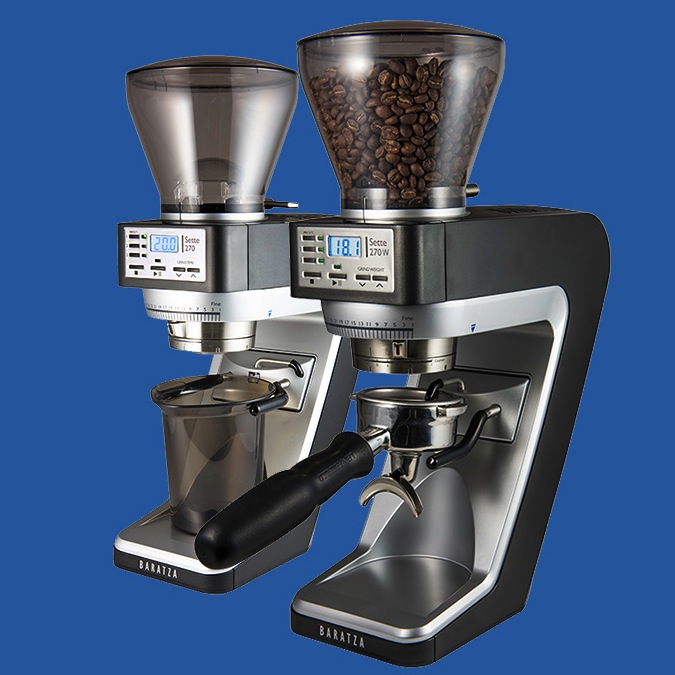
Now we get to the subject of this article, the Baratza Sette grinder, announced and introduced on April 1, 2015, with a projected “to market” date in the Summer of 2016, globally.
Remember how above I mentioned the specialty coffee world was begging for weight-controlled coffee grinding? Dial in 42.5g and want a grinder to deliver 42.5g each and every time, stopping automatically? Well, the specialty coffee world, which includes consumers, “prosumers”, home enthusiasts, home baristas, small cafe owners, large cafe owners and even coffee house chains, have been begging for accurate weight-controlled espresso grinding even louder than they were asking for it in non-espresso grinding. And for decades now, grinder manufacturers have us all “you have digital timers, be happy with that, it’s close enough and sort of repeatable”. One company decided that wasn’t enough to be happy with: that company is Baratza.
The Baratza Sette grinder will be the first grinder to hit the market to deliver this. Other companies are working on this too, but taking forever to do it (including Mahlkonig, who showed off a franken-EK43 with a portafilter holder attached to an internal scale), but the Sette from Baratza will be the first. The userbase of the specialty coffee industry begged for it, and Baratza, once again, delivers.
Weight-based grinding, real time, for espresso is enough to be a game changer, but the Sette 270W’s built in scale isn’t the only reason Baratza’s poised to change the game again. There’s a lot more with the Sette:
- Straight Path for Coffee. The Sette has a straight flow through path for coffee from whole bean to ground, delivered straight into the portafilter or grounds bin. This means several things: no clumping; no grind retention of note, and efficiency in operation. Once I get around to reviewing this product in depth, I will talk a lot more about this aspect.
- Grind by Weight into a Portafilter. I cannot stress enough how ground breaking this is. Until now we had to be satisfied with timers down to .01 seconds on commercial grinders to get a more or less repeatable dose of grind. No longer will we have to guestimate; the Sette will grind to within .2g of your desired grind weight, each and everytime.
- Unprecedented Grinding Speed. The Sette will grind 3.5 grams of espresso grind coffee every second, and 5.5 grams of pourover grind coffee every second. To give you an idea of how revolutionary that is for a home grinder; the Mazzer Mini Espresso grinder? It can barely do 1g a second grinding speed on its best day. The Sette will take 5.2 seconds to do an 18.5g espresso dose; roughly the same speed as a Anfim Super Caimano grinder.
- Breakthrough Price. To be frank, I’ve known about the Sette for about a year now and fully expected the Sette 270W to be nearly $1,000. I was shocked to learn it will retail for a MSRP of $499. If you don’t need the scale and just want to make do with the digital timer version, the Sette 270 will be $379. Wow… a full grind by weight espresso grinder for under $500.
I don’t know how good the Sette will be. It could be a bust. I don’t know how robust and repeatable the grind selection system will be on the Sette; I hope it’s a lot better than the Vario and Forte grinders when it comes to espresso. I don’t know how robust the grinder is, how bulletproof it is, or how easy it is to use, just yet. I’ll be getting a late prototype machine in soon to put through some paces, and then eventually, a production machine to do a review with.
What I do know now is this: Baratza has already done two truly revolutionary game changes in the coffee grinder world in their 17 years as a company, with many evolutionary changes in the meantime. I have full confidence that what they say the new Sette grinder is, it will be.
They are posed to deliver one of the “holy grails” of espresso coffee in the home: grinding by weight, down to the .1g in accuracy. Each and every time you press the grind button. And they’re posed to deliver another holy grail in the espresso (or pourover) grinder world: nearly zero grind retention. Think about it: a Compak K3 doser grinder leaves behind nearly 10g of ground coffee between uses. A Mazzer Major grinder up to 12g! The Sette? Effectively zero grounds left behind. Think of the money saved over time just by this alone.
2016 is the year of the grinder, and Baratza will be leading the charge. Exciting times to be a home coffee enthusiast.





















